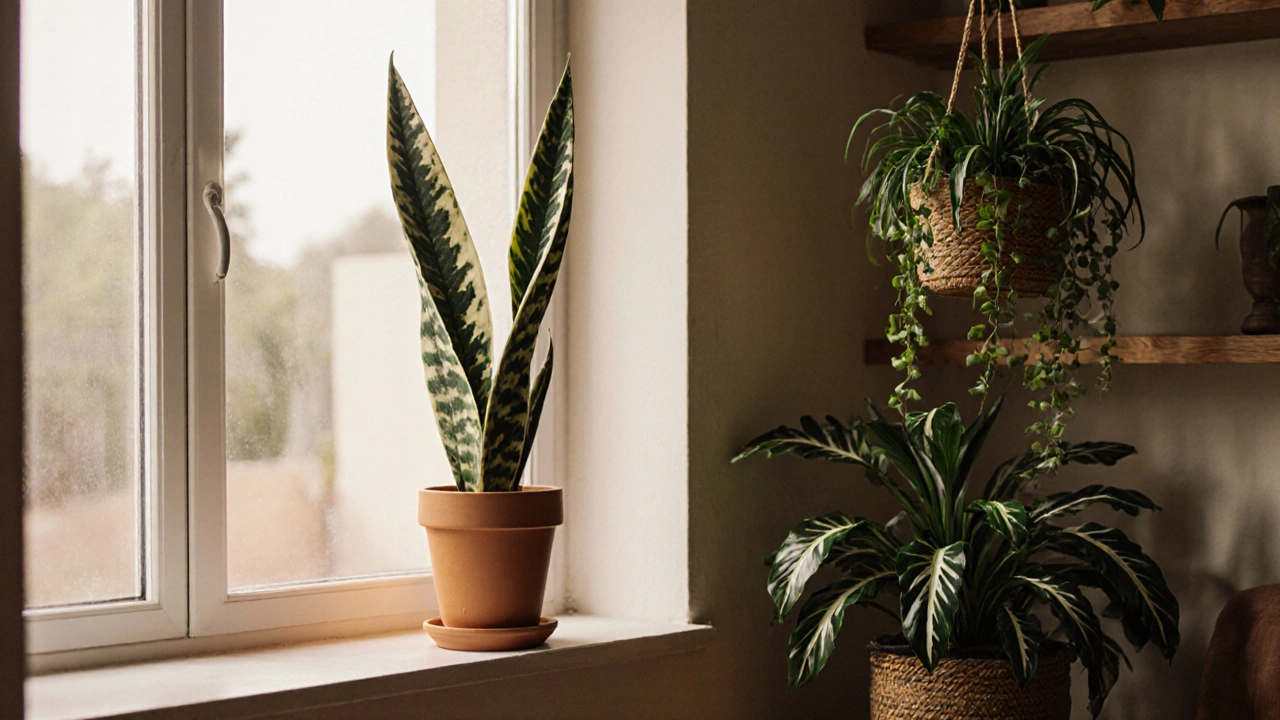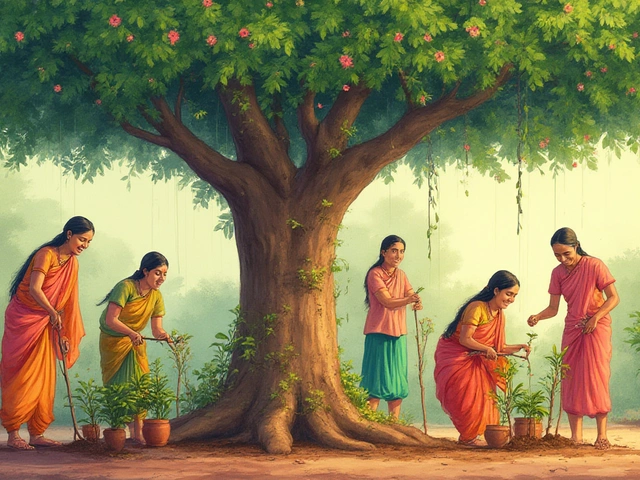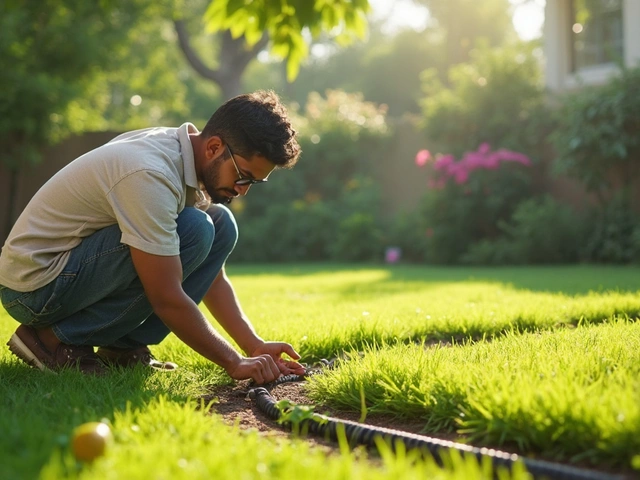Air Purification Calculator
When you hear the phrase grandma plant, you might picture a tiny herb from a grandma’s kitchen garden, but today it’s a nickname for a group of ultra‑easy, low‑maintenance indoor plants that perfect the art of sustainable living. These plants need little water, tolerate low light, and even clean the air, making them a go‑to choice for anyone who wants a greener home without a steep learning curve.
Grandma plant is a colloquial umbrella term for hardy houseplants such as Sansevieria trifasciata (snake plant), Chlorophytum comosum (spider plant), and Zamioculcas zamiifolia (ZZ plant). They earned the nickname because they’re the kind of plants grandparents have tended for decades - forgiving, resilient, and useful for indoor air quality.Why Call It a Grandma Plant?
The label stuck in the early 2000s when gardening blogs started highlighting plants that required “grandma‑level” care: a few waterings a month, occasional dusting, and no strict schedule. The term also taps into nostalgia - many seniors grew up with these species in their homes, so the name feels familiar and comforting.
Key Characteristics of a Grandma Plant
- Low water demand: Most can survive weeks between waterings.
- Adaptable lighting: From bright indirect to low‑light corners.
- Air‑purifying ability: They absorb volatile organic compounds (VOCs) like formaldehyde and benzene.
- Slow growth: Keeps the plant manageable in small spaces.
- Easy propagation: Leaf cuttings or divisions work for most varieties.
How Grandma Plants Fit Into Sustainable Indoor Gardening
Because they need little water and thrive in ordinary household conditions, grandma plants cut down on resource use. Pair them with sustainable practices such as compost tea feeding, reusable pots, and drip‑irrigation mini‑systems, and you have a low‑impact green corner.
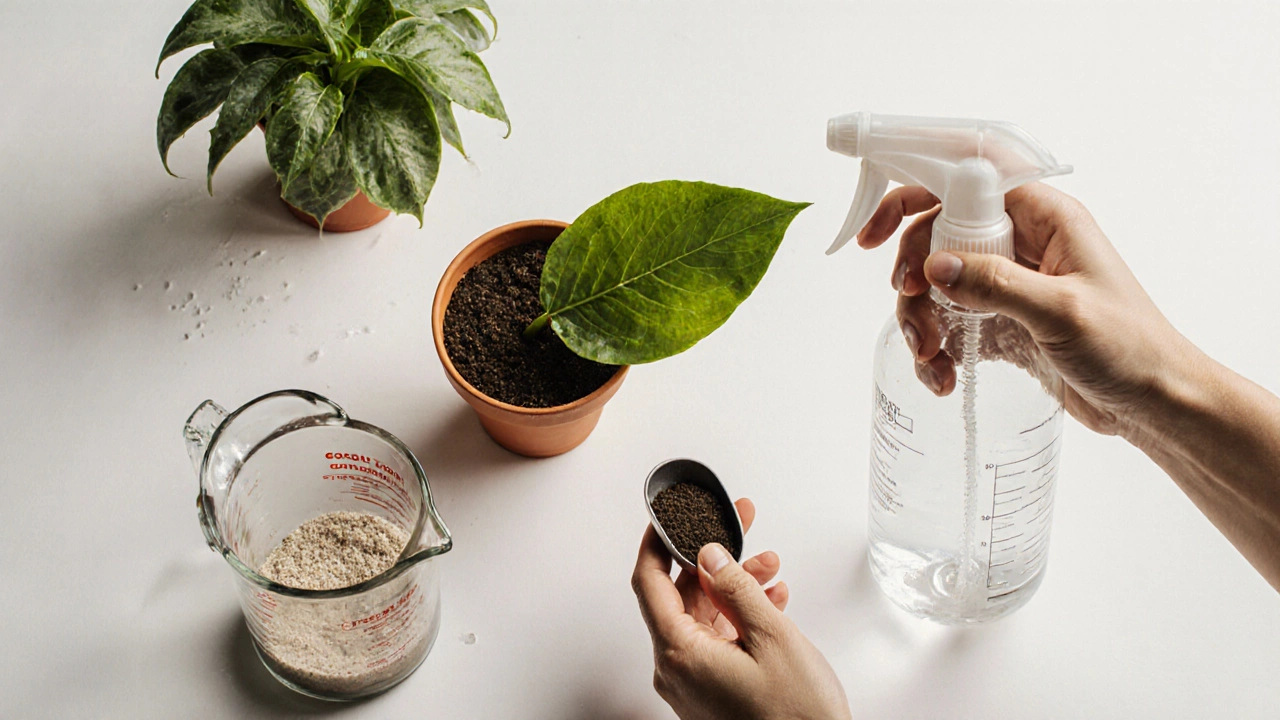
Step‑by‑Step Care Guide
- Choose the right spot: For snake plant, a bright window works but it can also handle a dim hallway. Spider plants love filtered light, while ZZ plants are almost indifferent to light levels.
- Water wisely: Stick a finger about an inch into the soil. If it feels dry, water until it drains. In winter, reduce frequency by half.
- Potting mix: Use a well‑draining blend - one part regular potting soil, one part coarse sand, and one part perlite. This prevents root rot, a common issue for low‑water plants.
- Feeding: Apply a diluted compost tea once a month during the growing season. Over‑fertilizing can cause soft growth.
- Cleaning: Wipe leaves with a damp cloth every few weeks. Clean foliage maximizes the plant’s air‑purifying function.
- Propagation: Cut a healthy leaf from the snake plant, let it callous for a day, then plant in moist soil. Spider plant babies (plantlets) can be snipped and rooted in water.
Comparison Table: Grandma Plant vs. Other Easy‑Care Options
| Plant | Light | Water | Air‑Purifying Rating | Typical Propagation |
|---|---|---|---|---|
| Grandma plant (Snake plant) | Low‑to‑bright indirect | Every 2‑4 weeks | High | Leaf cuttings |
| Spider plant | Bright indirect | Weekly in summer | Medium | Plantlet division |
| ZZ plant | Low‑to‑medium | Every 3‑4 weeks | Low | Leaf cuttings |
| Pothos | Low‑to‑bright | Weekly | Medium | Stem cuttings |
Common Issues and How to Fix Them
- Yellow leaves: Usually over‑watering. Let the soil dry out and improve drainage.
- Brown tips: Low humidity or fluoride in tap water. Use rainwater or distilled water and mist occasionally.
- Leggy growth: Not enough light. Move the plant closer to a window or add a low‑energy LED grow light.
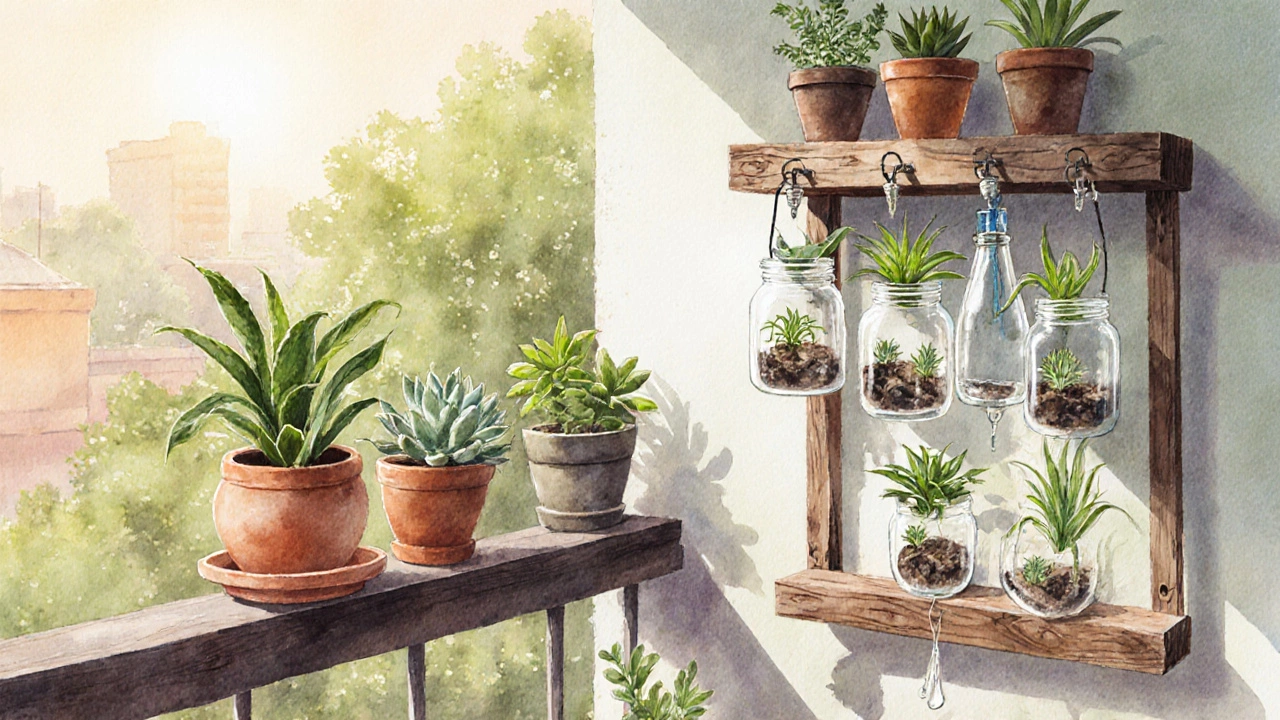
Integrating Grandma Plants into Sustainable Spaces
Whether you have a balcony, a tiny apartment, or a community center, grandma plants can be the backbone of a low‑impact green zone.
- Balcony gardens: Place potted snake plants in decorative ceramic containers. Pair them with drought‑tolerant succulents for a mixed display.
- Indoor air modules: Arrange several spider plants on a bookshelf to create a natural air filter.
- Community workshops: Teach seniors how to propagate leaf cuttings; the activity reduces plant waste and spreads sustainable habits.
Mini‑FAQ
What makes a plant a "grandma plant"?
A grandma plant is any hardy houseplant that thrives on minimal care, low water, and forgiving light conditions. Examples include snake plant, spider plant, and ZZ plant.
Can I keep a grandma plant outdoors?
Yes, in mild climates like Auckland, you can place them on a shaded patio during summer. Bring them inside when temperatures drop below 10°C to avoid frost damage.
Do these plants really improve indoor air quality?
Studies from NASA and independent labs show snake plants and spider plants can remove up to 30% of common VOCs in a 10m² room after several weeks of operation.
How often should I repot a grandma plant?
Every 2‑3years, or when you notice roots crowding the pot. Use fresh, well‑draining mix each time.
Is compost tea safe for these plants?
A weak tea (1part compost to 10parts water) applied once a month supports healthy growth without excess nutrients that could cause limp leaves.
Next Steps for a Greener Home
Start by picking one grandma plant that matches the light level in your favorite room. Set a reminder to check the soil moisture every two weeks, and pair the plant with a simple DIY drip‑irrigation bottle to automate watering. Over time, expand your collection, experiment with compost tea, and share cuttings with friends - the more plants you nurture, the smaller your carbon footprint becomes.
